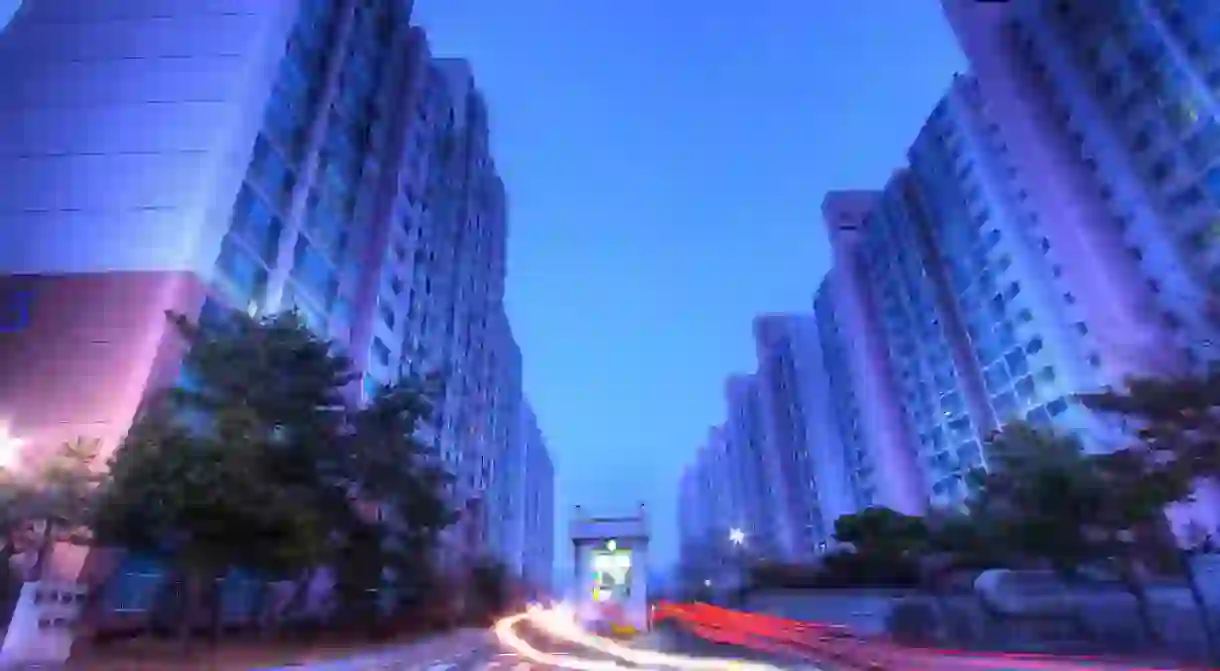Everything You Need to Know Before Renting an Apartment in South Korea

Between a slew of unfamiliar terms, contradictory advice on the web and the language barrier, finding housing in South Korea is no easy feat. But with a little bit of research – on how the housing system works, what types of residences are available and the process of signing a contract – you can equip yourself with the knowledge necessary to find an apartment that suits your needs and preferences.

Deciphering the Rental System
In many parts of the world, tenants wishing to rent an apartment pay a monthly rental fee and a one-time deposit that usually amounts to one or two months’ rent. In Korea, however, rental agreements are centered around either the jeonse or wolse system.
The jeonse system allows you to stay in your apartment without paying rent. The catch? Tenants must put down an enormous chunk of cash (also known as ‘key money’) before moving in. This deposit is typically 40 to 90 percent of the market value of the house. To put that into perspective, if you want to rent a studio with a 100-million Won market value, you can expect to pay a deposit of 40 to 90 million Won. The deposit is returned to the tenant at the end of the lease term – generally one to two years – if the agreed obligations are met.
To avoid putting up such a large sum of cash, most international residents opt for the wolse system, which requires a significantly smaller deposit, in addition to a monthly rent. With wolse, it’s possible to negotiate with the owner, and higher deposits often equate to lower monthly rent amounts. It is possible to find housing with deposits lower than 5 million Won, but these are few and far between, and normally require a higher monthly rental fee.

Know Your Options
It’s important to understand the different kinds of housing, so you can have a better idea of what to look for. Types of properties include: villas, officetels, apartments, short-term rentals and goshiwon. The first three use both the jeonse and wolse systems and are classified by style, size and value, while the latter two are better short-term, low-deposit options.
Villas, or low-rise apartment buildings, offer the greatest value, but also vary greatly in terms of quality, size and furnishings. Officetels, a combination of office and apartment complex, are slightly more expensive but usually feel more modern, and are furnished with newer appliances. Apartments are large residential complexes appropriate for families.
Short-term rentals are often fully furnished and are a good option for those who plan on staying in Korea for a short amount of time. Students and those on a tight budget should consider goshiwon – small rooms equipped with minimal furnishings, such as a bed, desk and closet.
When looking for housing, it is highly recommended that you use an English-speaking real estate agent who can explain the different types of housing in more detail.

What’s Included?
Korean apartments sometimes come fully furnished, but this is not usually the case. Pre-owned appliances and furniture can be purchased in most neighborhoods and sold back to the same store at the end of the lease term.
Ordinarily, utility service costs for electricity, tap water and gas should be paid by the tenant one month after moving in. There is also sometimes a building fee, known as gwanlibi, that must be paid to the landlord in addition to the rent. This is a fee that covers general maintenance and cleaning of the building, security guards and sometimes even internet.
Sign on the dotted line
You should be prepared to sign your housing contract directly with the owner in person. The owner’s name can be confirmed by checking the certified copy of register.
In the contract, the rental period and the amount of deposit money must be specified. At the time of signing the contract, you should also be prepared to provide at least 20 percent of the total key money deposit; the remainder is paid on the move-in date.
You must also discuss with the owner about how to pay for monthly fees and maintenance costs. Your real estate agent can arrange this on your behalf. Also, be sure to negotiate the real estate agent’s fee before signing the contract, if it is greater than the minimum amount required by law. Deals are made quickly in Korea, so expect negotiations to be completed within a month of your move-in date.

Your housing contract must be renewed every two years and, at the time of renewal, the owner may request an increase in monthly rent. Notification of the intention to give up tenancy before the expiry date stated on the contract should be given to the property owner at least one to two months in advance, so they may have enough time to prepare the money that is to be returned to you.
In cases where no prior notification has been given, the tenant may be responsible for compensating the property owner for the remaining tenancy period on the contract.
Living in South Korea isn’t always easy, but if you don’t mind a small living space and doing things a little differently, you’re in for an amazing experience. Happy house hunting!













